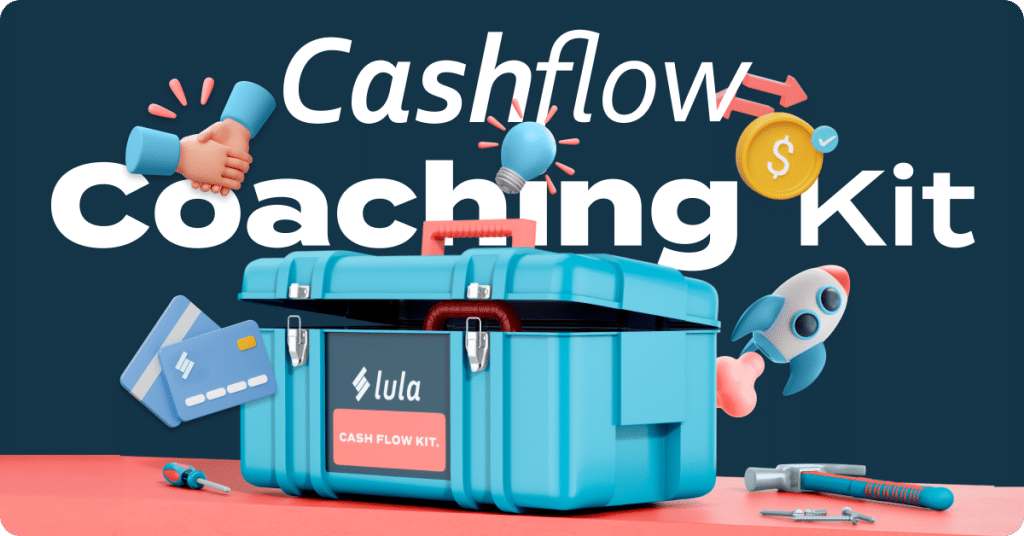Let’s face it: the world of running a business is more than just churning out brilliant ideas and hoping the money rolls in. The real magic happens behind the scenes, where cash flow- the fuel that keeps your engine running takes centre stage. But mastering this financial beast can feel like navigating a jungle with unexpected bumps and confusing pathways.
But fear not, this blog is part of a 4-part series that is the start of your cash flow mastering journey, guiding you through the essential tips and tricks to transform your cash flow from a sluggish trickle to a raging torrent. And as a bonus, you can find your downloadable Cash Flow Kit Ebook at the end.
Demystifying Cash Flow
Ever heard the saying, “Money can’t buy you happiness”? In the business world, it translates to, “Making more money won’t solve your problems if you can’t keep it flowing.” That’s where cash flow steps in, the lifeblood of your business, the real difference between thriving and surviving.
Profit and cash flow are two important financial indicators for any business. Profit refers to the amount of money a business has left after deducting all expenses from the revenue generated. On the other hand, cash flow refers to the amount of money that is coming in and going out of the business.
While profit indicates that the business is making money, cash flow is a more accurate measure of its financial health. It shows how much cash is available to pay bills, invest in growth, and meet other financial obligations. A business can make a profit but still have poor cash flow if it has a lot of outstanding invoices or high expenses.
Think of it like this:
Profit: You get a shiny trophy for winning the race (great for bragging rights!), but it doesn’t get you to the next race.
Cash Flow: Fuel that keeps the lights on and your engine running.
Profit tells you how well you’re making money, while cash flow reveals how much you actually have to pay bills, fuel growth, and keep everyone happy. It’s the real deal indicator of your business’s financial health.
Cracking the Cash Flow Code:
Understanding the difference between profit and cash flow is the first step to mastering the cash flow cycle.
- Sales & Money In: Every sale or purchase adds a chunk of cash to your bank account – your income, the fuel that keeps the cycle spinning.
- Expenses & The Outflow Drain: Rent, supplies, salaries – they all count as expenses, the money you spend to keep your business going.
- Profit & Your Bank Account: Subtract your expenses from your income. If you’re left with a positive number, congrats, you’ve made a profit! This is the sweet spot, the money you can reinvest or celebrate with (responsibly, of course!).
- Rinse & Repeat: The cycle never stops, a continuous loop between inflows and outflows. Mastering this cycle is key to keeping your business financially fit.
Cash Flow Forecasting: Peeking into Your Business’s Future:
Remember that race car? Imagine having a crystal ball to see how much fuel you’ll have for the next leg. That’s what cash flow forecasting does! By predicting your future income and expenses, you can avoid running out of gas (capital) and keep your business cruising smoothly.
To manage your cash flow effectively, you need to be proactive and stay on top of things. Begin by gathering intel from your previous bank statements and invoices to understand your cash flow rhythm. Once you have a clear picture of your past data and trends, you can make predictions about future surges, marketing campaigns, and other factors that may affect your cash flow.
To forecast effortlessly, use handy apps like Xero, Quickbooks, or Lulaflow. However, keep in mind that the future is flexible, and you may need to adjust your forecast as needed to stay on track. Don’t be afraid to make changes as you go along to ensure you stay ahead of the game.
Boost Your Cash Flow: From Trickle to Torrent:
Ready to turn that slow drip into a raging river? Let’s explore some strategies:
- Speed Up Your Cash Inflow: Embrace upfront payments, offer early bird discounts, and invoice promptly to keep the money flowing.
- Slow Down Your Cash Outflow: Negotiate with suppliers, pay strategically, and optimise your payment schedule to maximise your cash reserves.
- Unleash the Power of Assets: Sell unused tools or equipment to boost quick cash. Diversify your portfolio to avoid relying on a single source of income.
- Go Digital and Global: Build a user-friendly website and accept various payment methods to attract customers from across the globe.
- Build Your Financial Fortress: Have a backup plan in case of emergencies. Consider options like revolving credit facilities or business funding platforms like Lula for financial security.
Let’s dive deeper into each of these strategies:
Speed Up Your Cash Inflow:
Embrace upfront payments: One of the most effective ways to speed up your cash inflow is to ask for upfront payments. This is especially useful if you’re providing a service rather than selling a product. For instance, if you’re a freelance writer, you can ask for a deposit before starting work. This will help you cover your expenses while you’re working on the project.
Offer early bird discounts: Another way to speed up your cash inflow is to offer early bird discounts. This works well if you’re selling a product. The idea is to incentivise customers to pay early by offering them a discount. This will help you get the cash you need to cover your expenses.
Invoice promptly: One of the biggest mistakes small business owners make is not invoicing promptly. If you don’t invoice your customers on time, you’re giving them an excuse to delay payment. Make sure you invoice promptly and follow up if you don’t receive payment within the agreed time frame.
Slow Down Your Cash Outflow:
Negotiate with suppliers: One of the easiest ways to slow down your cash outflow is to negotiate with your suppliers. Ask them if they can give you a discount for paying early or in bulk. You’ll be surprised at how willing some suppliers are to negotiate.
Pay strategically: Another way to slow down your cash outflow is to pay strategically. This means paying your bills on time but not before they’re due. If you pay too early, you’re essentially giving away your cash for free.
Optimise your payment schedule: You can also optimise your payment schedule to maximise your cash reserves. For instance, if you’re paying your bills on a monthly basis, consider switching to bi-monthly or quarterly payments. This will help you spread out your expenses and avoid a cash crunch.
Unleash the Power of Assets:
Sell unused tools or equipment: If you have tools or equipment that you’re not using, consider selling them to inject a quick cash boost. You can use websites like Takealot to sell your items.
Diversify your portfolio: Another way to unleash the power of assets is to diversify your portfolio. Don’t rely on a single source of income. Explore other revenue streams that are related to your business. For instance, if you’re a software developer, you can also offer training services.
Go Digital and Global:
Build a user-friendly website: One of the easiest ways to attract customers from across the globe is to build a user-friendly website. Make sure your website is easy to navigate and has a clear call-to-action.
Accept various payment methods: Another way to attract global customers is to accept various payment methods. For instance, you can accept credit cards, PayPal, or Bitcoin. This will make it easier for customers to pay you regardless of their location.
Build Your Financial Fortress:
Have a backup plan: No matter how well you plan, there’s always a chance that something unexpected will happen. That’s why it’s important to have a backup plan in case of emergencies. Remember that emergencies can happen at any time, and it’s important for you to have a backup plan to deal with them. Something to consider: Revolving credit facilities: A revolving credit facility is a line of credit that a business can draw from as needed. It provides flexibility in managing cash flow and can be used to cover unexpected expenses.
Track your progress:
Analyse what works: Tracking your progress is key to mastering cash flow. Make sure you analyse what works and what doesn’t. This will help you fine-tune your strategies and adapt to changing circumstances.
Adapt your strategies continuously: Remember, mastering cash flow is an ongoing journey, not a one-time destination. Make sure you adapt your strategies continuously to stay on top of your game.
Mastering cash flow is essential for any business that wants to thrive in the long run. By understanding the ins and outs of cash flow, you can ensure that your business stays financially healthy and thriving. Download your cash flow coaching kit for detailed explanations, valuable tips, and practical tricks. The kit is packed with useful information that can help you improve your financial management skills.
Get it HERE.



